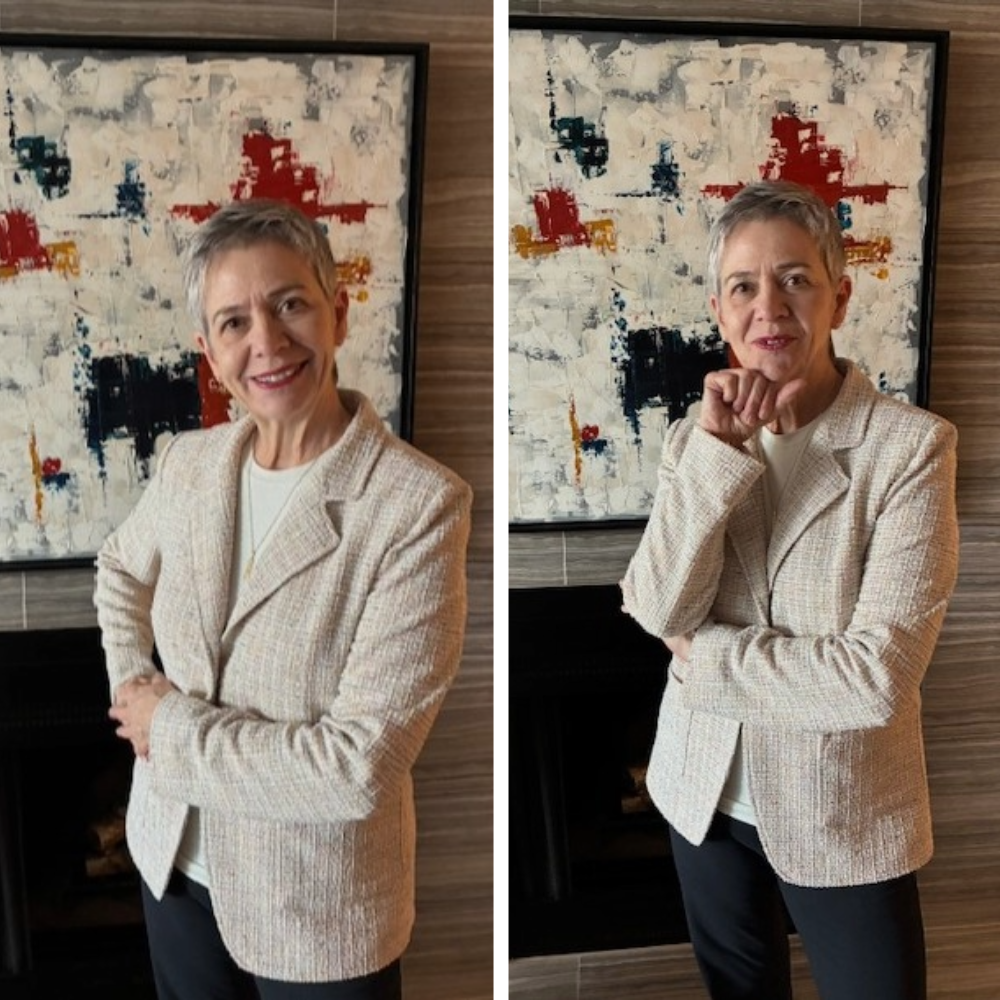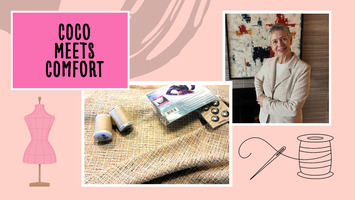
Coco Chanel introduced her first tweed jacket in her 1954 collection. Since then, the tweedy bouclé fabric has evoked a sense of understated luxury attainable by only a few lucky people. But what if you could find a piece of fabric that you could manipulate into whatever you wanted and create for yourself the same kind of look—quiet luxury? I know what I would do. I’d buy the fabric and make myself a jacket!
So, when I saw the Coco fabric (SKU-TR5413-0030) on offer this year and noticed that it was a knit (making it oh-so-comfortable), I knew I had to make a jacket. And it was a pattern I’d had for a while, awaiting just the right fabric—Butterick 5926—I finally found it. The pattern is designed to be a jacket that wears like a sweater—the fabric requires a bit of stretch.
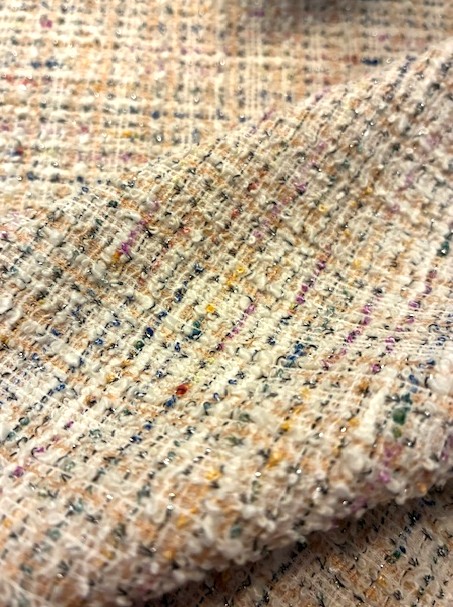
I liked the combination of textile types in the fabric: 77% Polyester, 10% Wool, 6% Cotton, 5%Acrylic and 2% Spandex. As I always do, I prepared the fabric before starting by washing a 4 X 4 sample and drying it in a low dryer. It came out beautifully, so I prepared the entire length of fabric in the same way. Then, I turned my attention to the pattern.
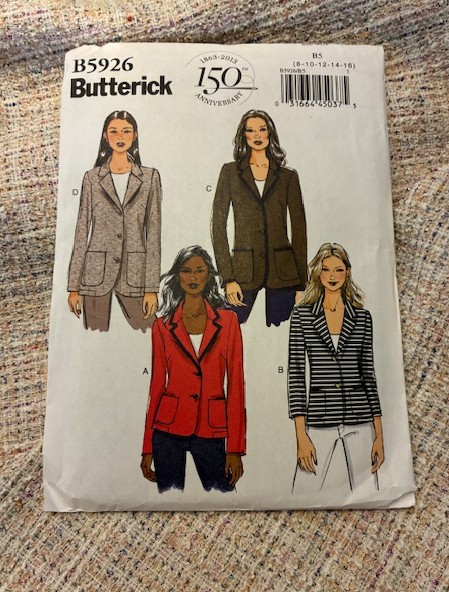
First, I had to make a few adjustments to perfect the design for me. I wanted to do View D because I wanted full-length sleeves and a longer length. What I discovered was that the length was too long to be flattering, so I shortened it by one and a half inches at the waist before proceeding to the cutting stage.
I have always loved tailored jackets and have made a few in my lifetime. This unlined version made from slightly stretchy fabric would be a bit different. It occurred to me that it might need just a bit more interior support than the pattern instructions called for, so I interfaced both the upper and lower collar as well as the front facing and an inch and a half of the interior of the jacket front. I used woven stretch interfacing for this, then cut a slightly heavier non-woven interfacing to add structure to the shoulders in both the back and the front. I was pleased I’d done this; otherwise, it would have been too slouchy.
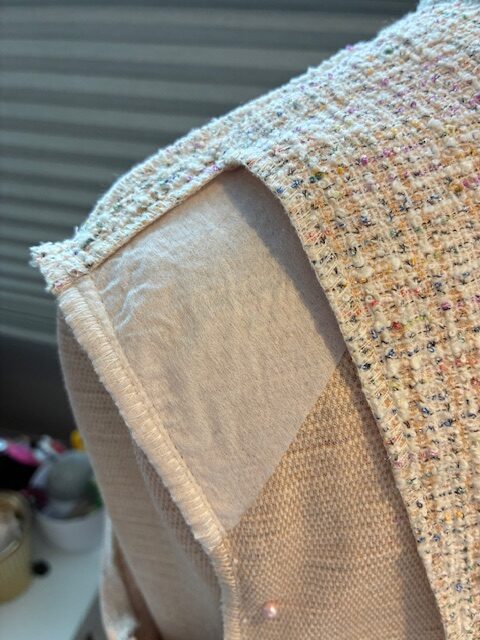
As I sewed the jacket together, I realized that I’d have to figure out a way to make the seams lie flat. I finished the seams on the serger so that I could open them up and run two lines of top-stitching—one on each side of the seam. I did this for all the seams, except for the underarm sleeve seam (which was too tricky to access). This approach resulted in beautiful flat seams.
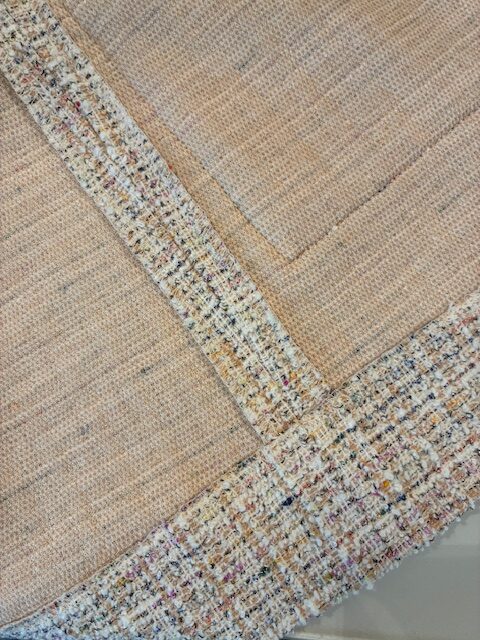
Then, there was the edge of the collars and the front of the jacket to contend with.
When I applied the facing and collar, there was little doubt that something would have to be done with the edges. I opted to top-stitch, and it made all the difference in how well the collar sat.
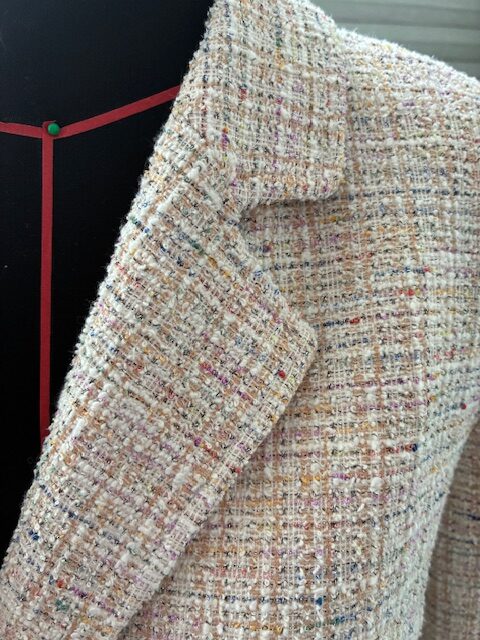
My main observation about this fabric is that, although it is smooth to the touch on the wrong side, the right side is scratchy. For anyone with sensitive skin, a stretch lining in any garment made from this would work well. If you plan to make a Chanel-style skirt or dress from this, it should definitely be lined. And I would not use it for children’s clothing.
I really love the look and versatility of a tailored jacket, and this is one I’ll be wearing on repeat during the upcoming season!
